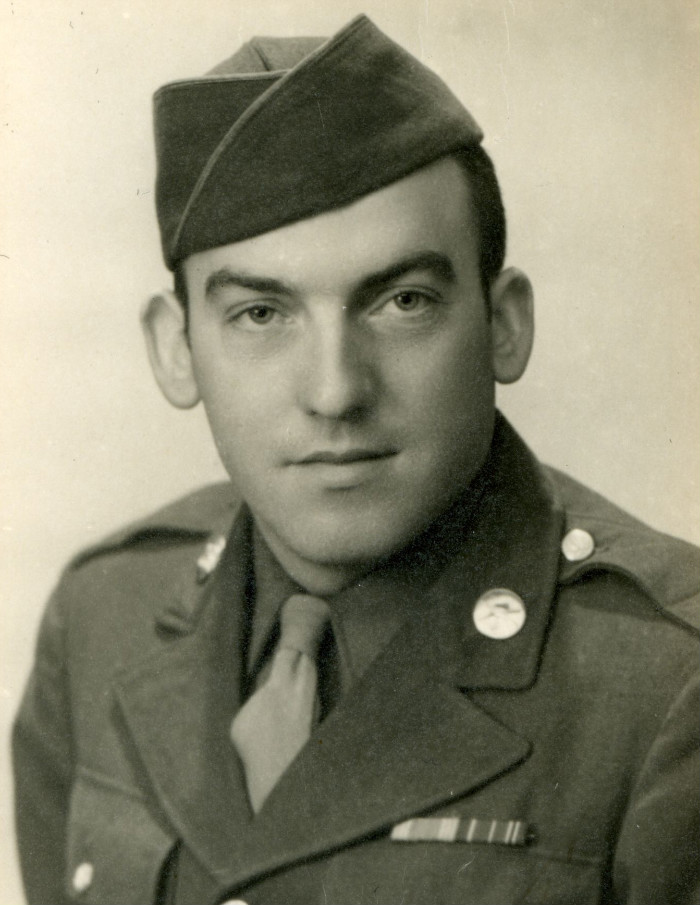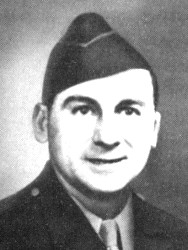Medal of Honor: John Minick
March 1, 2011
Posted in 121st Infantry, 8th Infantry Division, Everytown USA, Hurtgen Forest, John Minick, Medal of Honor, Tom Franks, World War II
Tags: 121st Infantry, 8th Infantry Division, Everytown USA, Hurtgen Forest, John Minick, Medal of Honor, Tom Franks, World War II
Germany’s Hurtgen Forest saw some of the most brutal fighting of World War II. In fact, for the U.S., it still stands as the longest running battle in history, spanning from September 1944 to February 1945. U.S. First Army casualties topped 33,000.
Tom Franks, from Wawaka, Indiana, fought in Northern Europe with Company I, 121st Infantry, 8th Infantry Division. Miraculously, he survived a bullet wound through the neck at Brest, France. Following a healing period in England, he rejoined his unit at the Hurtgen, Forest.
“They just started pouring in artillery,” Franks said, of the enemy. “You just can’t imagine the damage. This was a pretty dense forest with most of the trees being around 50 feet tall. When the artillery shells hit those trees, debris and shrapnel flew everywhere.
“…It was only late November, but winter came early that year. I remember seeing jeeps pulling trailers full of frozen, dead Americans. As they drove by, they would stack another on the pile, almost as if they were stacking wood.”
The events of November 21, 1944 remain with Franks today. “They really had her fortified,” he said of the encounter. “They were dug in deep with logs built up around their bunkers. They had us pinned down to the point that we weren’t getting anywhere.
“…Sergeant Minnick, I think he was from 1st Platoon, grabs his BAR, stands up and charges right up into one of these fortified positions, shooting the whole time. He didn’t make it, but he took a whole mess of them out. It was his actions that got us into the forest. It gave us a place to start and we went from there.”
John W. Minick would posthumously receive the Medal of Honor for his actions that day. The citation reads: “He displayed conspicuous gallantry and intrepidity at the risk of his own life, above and beyond the call of duty, in action involving actual conflict with the enemy on 21 November 1944, near Hurtgen, Germany. S/Sgt. Minick’s battalion was halted in its advance by extensive minefields, exposing troops to heavy concentrations of enemy artillery and mortar fire. Further delay in the advance would result in numerous casualties and a movement through the minefield was essential. Voluntarily, S/Sgt. Minick led 4 men through hazardous barbed wire and debris, finally making his way through the minefield for a distance of 300 yards. When an enemy machine gun opened fire, he signaled his men to take covered positions, edged his way alone toward the flank of the weapon and opened fire, killing 2 members of the gun crew and capturing 3 others. Moving forward again, he encountered and engaged single-handedly an entire company killing 20 Germans and capturing 20, and enabling his platoon to capture the remainder of the hostile group. Again moving ahead and spearheading his battalion’s advance, he again encountered machinegun fire. Crawling forward toward the weapon, he reached a point from which he knocked the weapon out of action. Still another minefield had to be crossed. Undeterred, S/Sgt. Minick advanced forward alone through constant enemy fire and while thus moving, detonated a mine and was instantly killed.”
Tom Franks would secure another Purple Heart exiting the forest. “I had only been back with my unit for 10 days when I got shot for the second time. The guy must have been a pretty bad shot because he only got me in the leg. It was my upper right leg, between the bone and the tendon.
“…I got sent back to the hospital. They didn’t send me back to England this time. By then, they had hospitals functioning in France and I went to one southwest of Paris. Fortunately for me, I was there during the Battle of the Bulge and missed the whole thing.”


